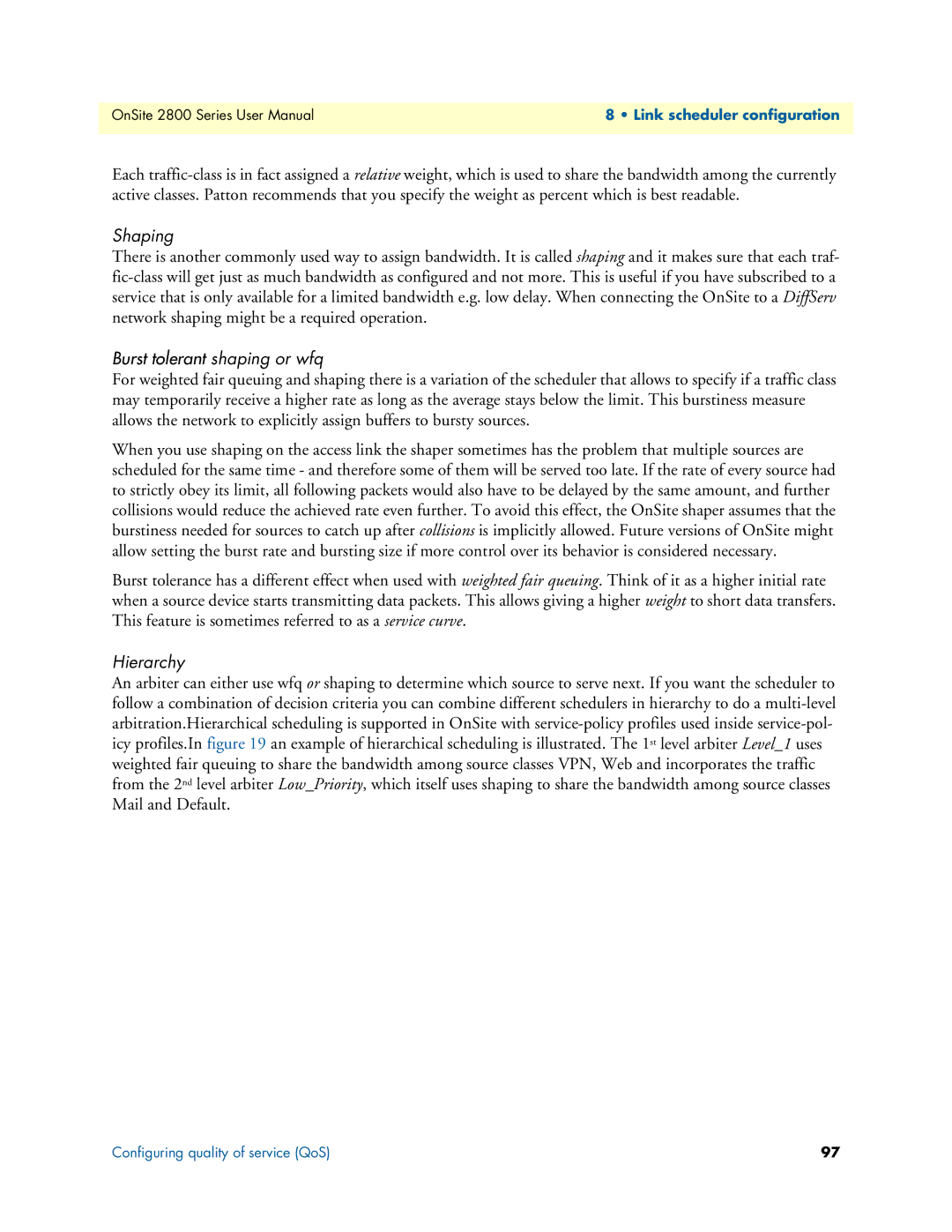OnSite 2800 Series User Manual | 8 • Link scheduler configuration |
|
|
Each
Shaping
There is another commonly used way to assign bandwidth. It is called shaping and it makes sure that each traf-
Burst tolerant shaping or wfq
For weighted fair queuing and shaping there is a variation of the scheduler that allows to specify if a traffic class may temporarily receive a higher rate as long as the average stays below the limit. This burstiness measure allows the network to explicitly assign buffers to bursty sources.
When you use shaping on the access link the shaper sometimes has the problem that multiple sources are scheduled for the same time - and therefore some of them will be served too late. If the rate of every source had to strictly obey its limit, all following packets would also have to be delayed by the same amount, and further collisions would reduce the achieved rate even further. To avoid this effect, the OnSite shaper assumes that the burstiness needed for sources to catch up after collisions is implicitly allowed. Future versions of OnSite might allow setting the burst rate and bursting size if more control over its behavior is considered necessary.
Burst tolerance has a different effect when used with weighted fair queuing. Think of it as a higher initial rate when a source device starts transmitting data packets. This allows giving a higher weight to short data transfers. This feature is sometimes referred to as a service curve.
Hierarchy
An arbiter can either use wfq or shaping to determine which source to serve next. If you want the scheduler to follow a combination of decision criteria you can combine different schedulers in hierarchy to do a
Configuring quality of service (QoS) | 97 |
